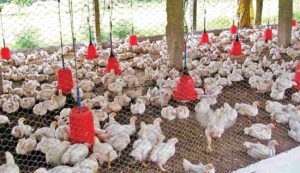Jharkhand Subsidy Scheme 2025: Under this scheme, the state government is giving subsidy and training to the farmers for poultry farming
Jharkhand Subsidy Scheme 2025: The state’s farmers and livestock producers will benefit from a new and significant project that the Jharkhand government is planning. The state is preparing a subsidy-based plan to encourage egg production. In addition, an action plan has been created to encourage natural farming in 12 state districts with the assistance of the federal government. Both of these programs aim to boost local output, raise farmers’ and livestock producers’ incomes, and establish sustainable agriculture.

Announcement of an egg production subsidies program
In a recent departmental review meeting, State Agriculture, Animal Husbandry, and Cooperation Minister Shilpi Neha Tirkey gave staff particular directives to boost egg production. According to him, the state has a lot of potential for producing eggs, and the government will set up a subsidy program to encourage business ventures in this area. The department’s primary goal, according to authorities at a meeting Tuesday at the Animal Husbandry Directorate in Hesag, the state, is to guarantee output in line with the state’s need for eggs. The government will provide financial support to everyone who wants to participate in egg production.
Entrepreneurs will get funding
Small and medium-sized egg producers will get subsidies under this program to launch new poultry farms or grow their current operations. In addition to ensuring the state’s self-sufficiency, this will boost the supply of eggs on the local market. Additionally, Minister Shilpi Neha Tirkey gave the authorities instructions to teach state-wide public employees as quickly as feasible. For this, the agricultural scientists at Birsa Agricultural University (BAU) will teach the public workers in various groups.
Twelve districts will begin natural farming
Twelve districts in Jharkhand have been chosen to support natural farming under the Central Government’s National Natural Farming Mission. The districts that were chosen are
- Ranchi
- Palamu
- Deoghar
- Dumka
- Giridih
- Sahibganj
- Hazaribagh
- Lohardaga
- Gumla
- Garhwa
- East Singhbhum
- West Singhbhum
In these regions, 88 natural farming clusters will be established, where organic and natural agricultural methods will be used. The government intends to encourage environmentally friendly farming and release farmers from their reliance on chemical pesticides and fertilizers.
For what reason were these districts chosen?
These twelve districts were chosen based on a number of significant factors. These consist of
- Being near a river basin allows for greater irrigation facilities.
- majority of indigenous people—in order to encourage natural and traditional farming.
- Prior organic agricultural projects, where awareness and work have previously been done.
- excessive or insufficient use of chemical fertilizers in order to achieve equilibrium.
What will the government’s effort accomplish?
- The state’s ability to produce eggs on its own will grow.
- Young people in the area will work for themselves.
- Natural farming will save the environment and enhance soil health.
- Farmers will make more money and their expenses will go down.
- There will be organic and healthful items on the market.

